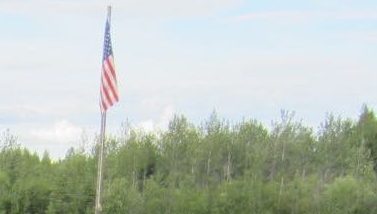Lately I’m learning the potent juxtaposition of paired images in haiku. Leaving two images beside each other joins them across the hinge, or
kireji, creating a natural association. The poem acts as a reversible metaphor where each image can be at once the reality and the comparison. Here, the flag
is the woman searching her purse. Equally so, the woman’s searching through tears
is the national symbol. Last week, in the wake of the election, I took the opportunity to comfort my distressed students and equip them with the most precious coping tools we have: hope and gratitude. I think their distress was, more than mere partisanship, a product of the adults in their lives acting out of fear and anger, which the young always internalize. Enduring brief glimpses of rioting in Portland, I think of all the in-fighting and needless destruction the flag has witnessed, and she does remind me of a strong and aging woman momentarily overcome. I’m drawn by the ambiguity of the tears. Are they a form of longing for a peace that’s only ever existed as an ideal? Are they sorrow or dismay for children who lack the perspective and experience to sooth themselves less violently? The brevity of haiku also evokes, for me, that briefest verse: “
Jesus wept.” In that story, he stands before the tomb of Lazarus. He already knows he’ll raise Lazarus and has come to the site for that sole purpose. He knows there is joy waiting brief moments away. Yet he weeps for the pain of his friends in the anguish of the moment. This pair of images is from a longer poem about my nieces climbing the tree in my parents’ backyard. In its original context, it’s surrounded by much more movement and promise. Here, as a gesture of quiet compassion, I excerpt it as a haiku for my friends who are troubled. May joy come with the morning.

